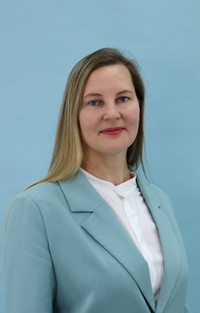Архив журнала
Характер психомоторного развития детей с депривацией слуха
- 945
- Файл статьи: PDF
Аннотация: Помощь детям с сенсорной депривацией представляет собой сложную, многогранную и мультидисциплинарную задачу. Поражение анализаторов приводит к задержке формирования функций, обусловленной тем сенсорным потоком, который обеспечивает данный анализатор. В частности, известна роль тугоухости в формировании синдрома дефицита внимания и гиперактивности у детей. Нарушение слуха в детском возрасте представляет собой весьма значимую медико-социальную проблему, заключающуюся в возможных ограничениях жизнедеятельности, в частности в области обучения: усвоения про-граммы массовых дошкольных и школьных учреждений; необходимости инклюзии детей в мире слышащих людей. Цель настоящего исследования заключается в определении спектра расстройств развития и выявлении закономерностей их формирования у детей с депривацией слуха. Все дети, принимавшие участие в исследовании, были оценены с помощью как минимум двух из трех представленных шкал: Интеллектуальной шкалы по Griffiths (Griffiths Mental Developmental Scale — GMDS), Моторной шкалы Альберта (Alberta Infant Motor Scale — AIMS) и Денверского скрининг-теста (Denver Developmental Screening Test — DDST). Полученные результаты обработаны с помощью пакета прикладных программ «Statistica for Windows 10.0» c использованием методов непараметрической статистики (ранговые корреляции Спирмена, критерий χ2). Следующим этапом исследования стал поиск индивидуальных вариантов развития детей с тугоухостью с помощью упомянутых стандартных методов оценки психомоторного развития. Из приведенных тестов за основу взят DDST, включающий мéньшее количество шкал (4), что ограничивает до разумного разнообразие вариантов индивидуальных траекторий развития. В результате определены 22 профиля индивидуального развития.
Ключевые слова: психомоторное развитие; психомоторика; сурдопедагогика; дети с нарушениями слуха; нарушения слуха; тугоухость; ранний возраст; депривация слуха.
Abstract: Helping children with sensory deprivation is a complex, multifaceted and multidisciplinary problem. The analyzers’ defects lead to a delay in the formation of functions caused by the deficiency of the sensory flow provided by this analyzer. In particular, the role of the partial hearing loss in the formation of attention deficit hyperactivity disorder in children is well known to specialists. Hearing impairment in childhood is a serious medical and social problem encumbering life activity, especially in the field of education: acquisition of the program of mass preschool and school institutions; the need for inclusion of children in the world of hearing people. The purpose of this study is to determine the spectrum of developmental disorders and to identify the patterns of their development in children with hearing deprivation. All children participating in the experiment were tested using at least two of the three scales presented: the Griffiths Mental Developmental Scale (GMDS), the Alberta Infant Motor Scale (AIMS) and the Denver Developmental Screening Test (DDST). The results were processed using the Statistica for Windows 10.0 software package using nonparametric statistics methods (Spearman rank correlations, and χ2 criteria). The next stage of the study was the search for individual variants of the development of children with partial hearing loss with the help of the above mentioned standard methods of assessing psychomotor development. From these tests, DDST was chosen as the basic one, including a smaller number of scales (4), which reasonably limits the versatility of variants of individual development trajectories. As a result, 22 profiles of individual development were identified.
Key words: psycho-motor development; psycho-motor activity; surdopedagogy; children with hearing impairments; hearing impairments; partial hearing loss; early age; hearing deprivation.


